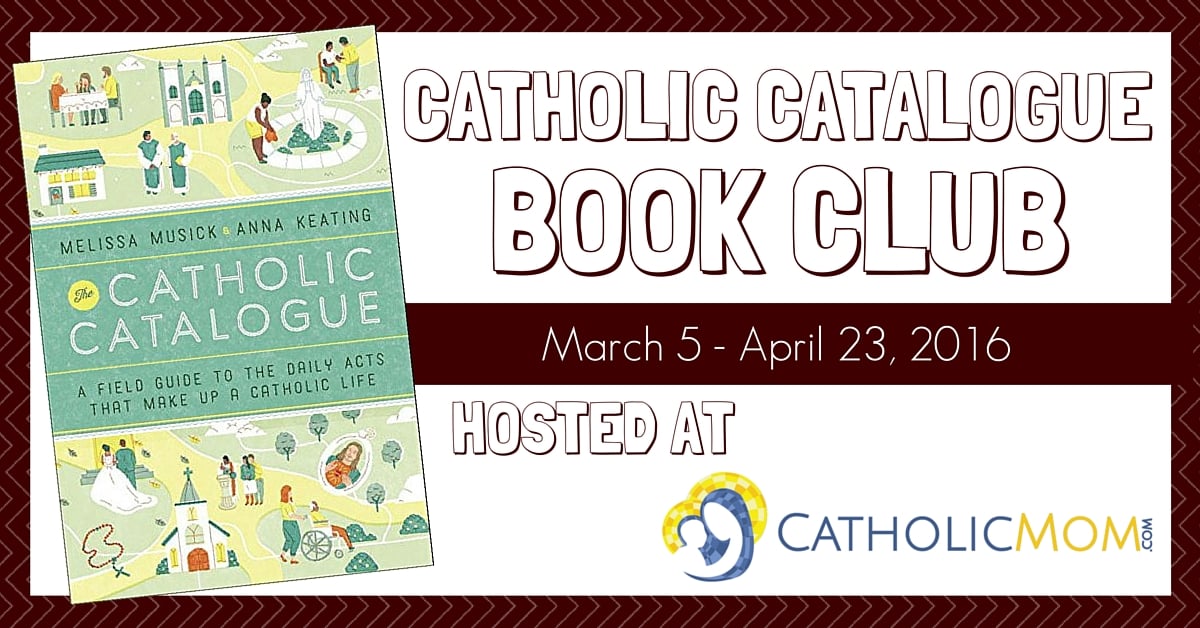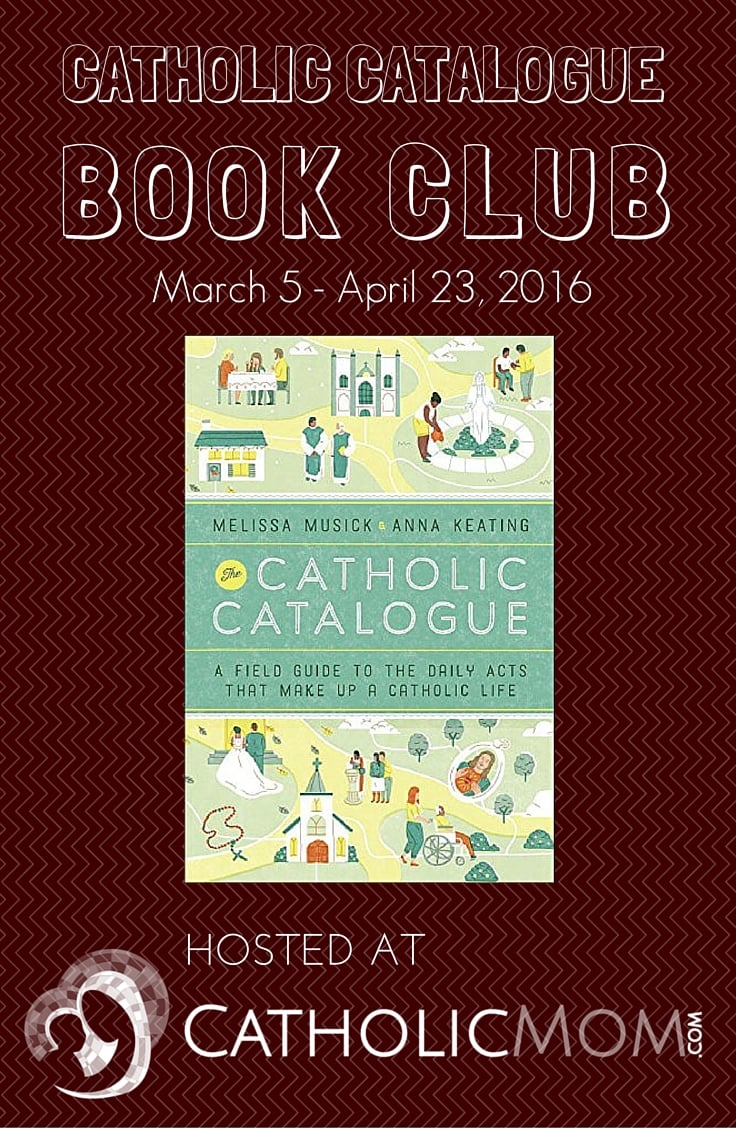Welcome to the Catholic Catalogue Book Club! We're reading The Catholic Catalogue, by Melissa Musick and Anna Keating.

This is the book on liturgical living that I wish I'd had when my children were younger! However, that doesn't mean that my family can't benefit from its content now. In fact, I might need it even more now.
As the mom of two young adults and one teenager, my energy is consumed by different concerns than I had when my oldest was still in elementary school. It's easy, now that everyone's more independent about so many things, to let my liturgical living be limited to Mass and private devotions like Liturgy of the Hours. But my reading of this book has convinced me that no matter what the age of my children, I need to make sure that the observations of both the daily and the seasonal aspects of Catholic life take place on a family level, not just a personal one.
One thing that I do stress as a part of liturgical living is Meatless Fridays, even outside of Lent, much to my bacon-loving teenager's chagrin!
This week's chapters concern Lent, Holy Week and the Easter season, and the discussion of prayer, fasting and almsgiving in chapter 32 was excellent. I was very struck by this idea, which by no means should be limited to Lent: "Practicing hospitality is also an aspect of almsgiving" (165). That is a wonderful lesson to be shared with children of any age.
Lent is a season of mercy and of realizing how much we need God's mercy; the authors stress that "we repent during Lent in order to experience God's kindness" (159-60). I liked their comparison of wearing ashes on the forehead to brands or logos we allow to define us (161); Ash Wednesday does seem to be one of those times when everyone gets into the liturgical rhythm, even just for a day.
I was glad to see the authors describe the Triduum as days that feel as if "time stands still" (172); it really does feel like that! Those three days are outside the normal rhythm in so many ways, which only serve to underscore the solemn importance of the Great Three Days.
Readers are encouraged to "observe each [Triduum] liturgy in the same church" because there needs to be a "unity of place" (175). This helped me understand why my parish, comprised of 2 churches, has all Triduum liturgies in one of them instead of alternating between the two. When there are two churches in a parish, it's easy to feel as if one of them is being disrespected or left out of things; it was helpful to learn that there really are behind-the-scenes reasons for things like this.
Tomorrow is Divine Mercy Sunday (ch 40). Learn to pray the chaplet if you don't do so already! I am new to the Divine Mercy Chaplet but it's easy to learn; pages 202 and 203 have complete directions.
There is so much packed into the chapters of this book that it's impossible for me to comment on all the things I'd marked. I was fascinated to learn why we do many of the things we do, and this is a book I'll keep nearby so that I can consult it for ways to bring the life of the Church to life in my own domestic church.
To Ponder, Reflect, and Discuss:
- How can we build upon the enthusiasm everyone seems to have on Ash Wednesday and just after Easter in terms of our family's liturgical living?
- Chapter 42 is all about intercessory prayer. How can you be an intercessor for your family and other loved ones?
- What practice or custom did you learn about in these chapters that you can incorporate into your family life?
Feel free to comment on your own thoughts from this week's reading, your impressions and reflections, and/or your answers to these questions.
Next week, we'll cover Part Two: Seasons of the Church Year (#45-60). For the complete reading schedule and information about our Book Club, visit the Catholic Catalogue Book Club page.
Copyright 2016 Barb Szyszkiewicz, OFS

About the Author

Barb Szyszkiewicz
Barb Szyszkiewicz, senior editor at CatholicMom.com, is a wife, mom of 3 young adults, and a Secular Franciscan. Barb enjoys writing, cooking, and reading, and is a music minister at her parish. Find her blog at FranciscanMom and her family’s favorite recipes with nutrition information at Cook and Count. Barb is the author of The Handy Little Guide to Prayer and The Handy Little Guide to the Liturgy of the Hours, available from Our Sunday Visitor.


.png?width=1806&height=731&name=CatholicMom_hcfm_logo1_pos_871c_2728c%20(002).png)
Comments